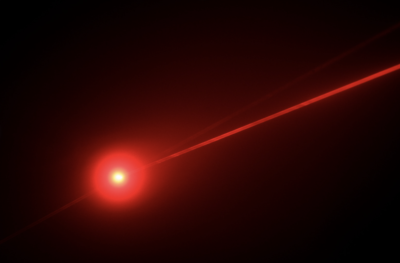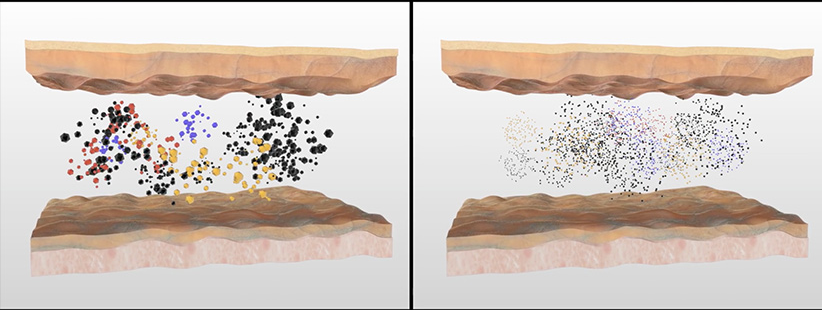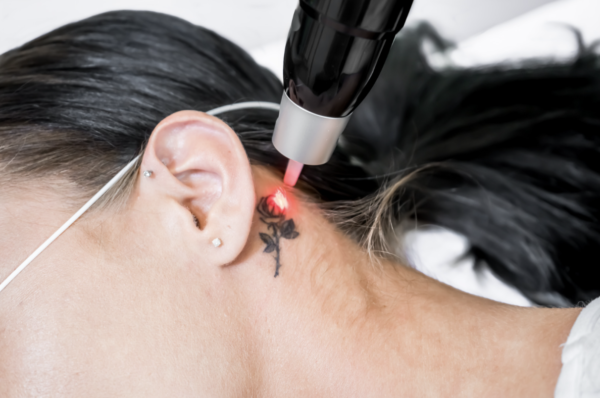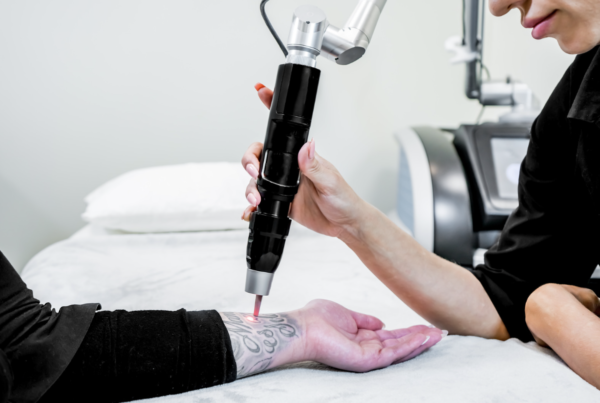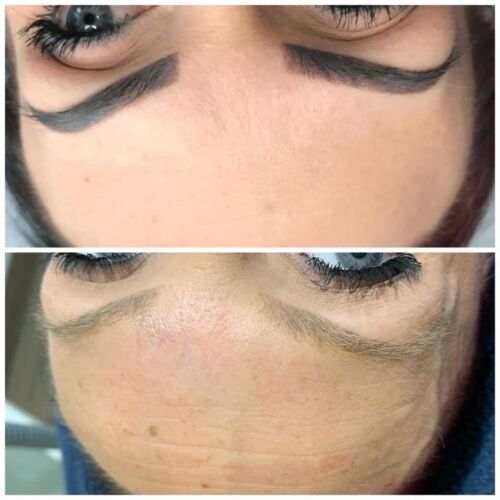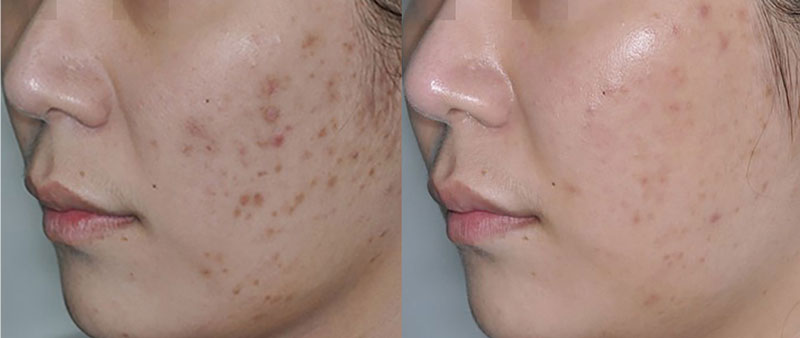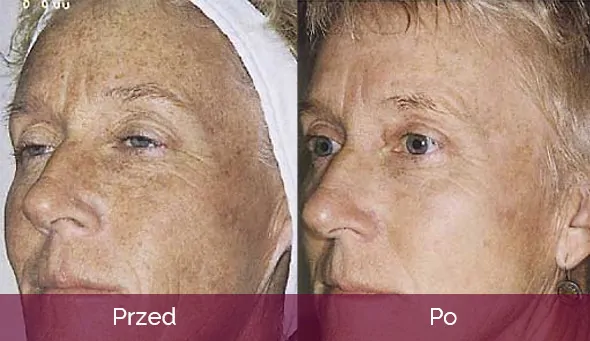Introduction:
- What is a picosecond laser and how does it differ from other lasers?
- A brief overview of its growing use in cosmetology.
Basic Operation:
- Mechanism of action of the picosecond laser.
- How picoseconds affect effectiveness and safety.
Tattoo Removal:
- Why it is more effective than other technologies?
- Advantages such as less discomfort and shorter healing time.
Scar and Pigmentation Treatment:
- Application in the treatment of acne scars, postoperative scars, and pigmentation.
- Comparison with other available methods.
Skin Rejuvenation:
- How picosecond laser can help rejuvenate the skin.
- Biological mechanisms involved in the process.
Removal of Skin Lesions:
- Ability to use for the removal of warts, moles, and other skin lesions.
- Advantages and limitations.
Pros and Cons:
- Overview of benefits such as effectiveness and lower risk of complications.
- Potential drawbacks, including costs and availability.
Clinical Cases:
- Description of several clinical cases illustrating the effectiveness of the picosecond laser.
Summary and Future:
- Summary of research and clinical experiences.
- Prospects for future applications and research.
Introduction
In today’s world, where outward appearance is often as important as abilities and skills, cosmetology takes on special significance. Technological innovations in this field are intensively researched, and one of the most promising tools in the cosmetic arsenal is the picosecond laser. This type of laser, utilizing ultra-short light pulses on the order of picoseconds (10^-12 seconds), represents a revolution in aesthetic skin therapy. Its application is not only effective but also significantly less invasive and with lower risk of complications compared to traditional methods.
In this article, we will examine the mechanisms of action of the picosecond laser and its growing use in cosmetology. We will discuss its effectiveness in tattoo removal, scar and pigmentation treatment, as well as skin rejuvenation. We will also compare it with other available technologies, highlighting its advantages and potential drawbacks.
The goal is simple: to understand why the picosecond laser is gaining popularity and what its real benefits are in the context of improving skin aesthetics and health.
Basic Operation
The picosecond laser is a type of pulsed laser that generates ultra-short light pulses with a duration on the order of picoseconds (10^-12 seconds). It is this unique characteristic that gives the picosecond laser its exceptional properties and applications in cosmetology.
Mechanism of Action
In the case of a picosecond laser, ultra-short light pulses are directed onto the target area of the skin. The duration of the pulse is so short that it minimizes the risk of damaging surrounding skin structures. This phenomenon is called “selective photothermolysis” and allows for the precise removal of unwanted pigment or tissue structures without affecting healthy skin.
Effectiveness and Safety
The limited risk of damage makes the picosecond laser not only effective but also safe. The short exposure time means less heat generation, minimizing the risk of burns and scars. As a result, healing after the procedure is faster, and discomfort and the risk of complications are significantly lower compared to lasers that generate longer pulses.
Precision
Thanks to the ability to concentrate energy in such a short time, the picosecond laser offers a high level of precision. This allows for effective and precise removal of various skin lesions from pigmentation to tattoos, which is difficult to achieve for lasers with longer pulse durations.
As a result, the picosecond laser opens up new possibilities in cosmetology, enabling effective and safe treatment of various aesthetic and dermatological problems. It is a tool that will certainly have a lasting impact on the future of cosmetology.
Tattoo Removal
One of the most popular and effective uses of picosecond laser in cosmetology is tattoo removal. This procedure is gaining importance in an era where tattoos are increasingly common, but also subject to “fashion” changes and may be perceived as a youthful mistake or a choice that is later regretted.
Why It’s More Effective?
Traditional methods of tattoo removal have often been cumbersome, painful, and not always effective. The introduction of picosecond laser has changed this situation. Thanks to ultra-short pulses of light, the tattoo pigment is more effectively shattered into microscopic particles, which are then more easily removed by the body’s immune system.
Advantages
- Less Discomfort: Due to the short duration of the pulse, the procedure is much less painful compared to traditional methods.
- Shorter Healing Time: The minimal amount of heat produced reduces the risk of scarring and burns significantly, shortening the time needed for skin regeneration.
- Higher Effectiveness: Picosecond laser is effective even in the case of difficult-to-remove colors, such as green or blue, which were problematic for older types of lasers.
Limitations and Considerations
Although picosecond laser is a powerful tool in tattoo removal, it is not without limitations. The procedure can be costly and may require several sessions to achieve optimal results. Additionally, like any medical procedure, it is not free from the risk of complications, although they are significantly less than with other methods.
As a result, picosecond laser has become the gold standard in tattoo removal, offering a faster, more effective, and less painful solution for those looking to rid their skin of unwanted ink.
Treatment of Scars and Pigmentation
The treatment of scars and skin pigmentation is another important area where picosecond laser demonstrates its exceptional effectiveness. These aesthetic issues can have a significant impact on the quality of life and self-esteem of patients, making finding effective methods for their reduction a priority in the field of cosmetology.
Application in Scar Treatment
- Acne Scars: Picosecond laser enables targeted destruction of altered skin cells while minimizing the impact on healthy tissue. This makes it effective in treating acne scars.
- Postoperative and Traumatic Scars: By stimulating the production of collagen and elastin, picosecond laser accelerates the skin’s natural regenerative processes, helping to minimize the visibility of scars.
Application in Pigmentation Treatment
- Melasma and Age Spots: Thanks to its precise action, picosecond laser allows for selective removal of pigmentation spots without affecting the surrounding tissue. This is particularly beneficial in treating challenging issues like melasma.
- Moles: Picosecond laser facilitates mole removal with less risk of scarring compared to surgical removal.
Comparison with Other Available Methods
Compared to traditional techniques such as dermabrasion or whitening creams, picosecond laser offers more precise and long-lasting results with lower risk of complications. Furthermore, the procedures are typically less painful and involve shorter recovery periods.
In summary, picosecond laser is a powerful tool in the treatment of scars and pigmentation issues, providing effectiveness and safety that cannot be achieved with other methods. Its ability to precisely and deeply penetrate tissue makes it a promising option for many patients seeking aesthetic skin improvement.
Skin Rejuvenation
Skin rejuvenation is one of the most sought-after procedures in cosmetology, and picosecond laser is gaining increasing popularity in this category. Aging skin is an inevitable process, but modern technologies, such as picosecond laser, offer increasingly advanced and less invasive methods to combat this phenomenon.
Mechanisms of Action
The action of picosecond laser in skin rejuvenation is based on stimulating the production of collagen and elastin, two key proteins responsible for skin firmness and elasticity. Short pulses of light penetrate deep into the skin, initiating regenerative and remodeling processes.
Advantages
- Non-Invasiveness: Treatments are less invasive than plastic surgery, which means a lower risk of complications and shorter recovery time.
- Reduced Risk of Side Effects: Thanks to the laser’s selective action, the risk of scarring or discomfort is minimal.
- High Effectiveness: In many cases, significant improvements in skin appearance are observed, including the reduction of fine lines and wrinkles, as well as improvement in skin texture and tone.
Applications
- Wrinkles and Expression Lines: Picosecond laser is effective in reducing fine lines and wrinkles, especially around the eyes and mouth.
- Skin Firming: Treatments can also help tighten the skin by stimulating collagen production.
- Even Skin Tone: The laser helps to reduce pigmentation and other unevenness, contributing to a more uniform and youthful appearance of the skin.
Skin rejuvenation with picosecond laser is a promising direction in the field of aesthetic cosmetology, offering real and long-lasting results. It is used both in the treatment of mature skin and in the prevention of skin aging in younger individuals.
Skin Lesion Removal
Picosecond laser has also found application in the removal of various types of skin lesions, from small warts and moles to more complex dermatological issues such as birthmarks or keratosis. Its versatility and precision make it one of the most effective tools in this field.
Types of Skin Lesions
- Warts and Moles: The laser can precisely remove these lesions, minimizing the risk of scarring.
- Birthmarks and Telangiectasia: Picosecond laser is effective in closing overly dilated blood vessels, leading to the disappearance of birthmarks.
- Keratosis and Other Skin Growths: These changes can also be effectively minimized or removed, which is particularly beneficial for individuals at risk of developing skin cancer.
Advantages
- Precision: The laser allows for the focusing of energy only on the altered cells, minimizing the impact on surrounding healthy tissue.
- Reduced Risk of Complications: The absence of the need for surgical incisions significantly reduces the risk of infection and scarring.
- Short Recovery Time: Patients typically return to normal activity shortly after the procedure.
Limitations and Considerations
Even though picosecond laser is a powerful tool, it is not suitable for all types of skin lesions. Some cases may require more invasive procedures or pharmacological treatment. Consultation with a dermatologist or cosmetologist is always recommended before undergoing any laser treatment.
In conclusion, picosecond laser is a versatile and effective tool in the removal of skin lesions, making it an attractive choice for patients and physicians seeking quick and lasting results.
Advantages and Disadvantages of Picosecond Laser
In every treatment method, there are both advantages and disadvantages, and picosecond laser is no exception. Here are some of the main aspects to consider:
Advantages
- Precision: One of the greatest advantages of picosecond laser is its ability to precisely target specific cells or layers of the skin, minimizing damage to surrounding tissue.
- Short Recovery Time: Due to the non-invasiveness of the procedure, the recovery time is typically short, which is a major advantage for patients.
- Versatility: Picosecond laser can be used in various treatments, from tattoo removal and treating pigmentation to scar reduction and skin rejuvenation.
- Lower Risk of Side Effects: The risk of scarring, hyperpigmentation, or infection is significantly lower compared to some other methods.
Disadvantages
- Cost: Laser treatments are often more expensive compared to other available methods, which may be a barrier for some patients.
- Number of Sessions: Depending on the case, multiple sessions may be required, which prolongs the treatment time and increases costs.
- Not Suitable for Everyone: Not all skin types or conditions are suitable for picosecond laser treatment. For example, darker skin types may be more prone to hyperpigmentation.
- Limited Clinical Studies: Although the technology is promising, it is still relatively new and requires further research, especially regarding long-term effects.
In summary, picosecond laser is a powerful tool with many advantages, but like any technology, it is not without its drawbacks. It is important for each patient to carefully consider both sides of the coin and consult with a qualified specialist before making a treatment decision.
Clinical Cases
Clinical studies and real-life cases are a key element in evaluating the effectiveness and safety of any new medical technology, including picosecond laser. Here are a few examples illustrating the application of this technology in clinical practice:
Tattoo Removal
- Case 1: A 35-year-old patient decided to remove a tattoo on their forearm. After a series of 4 picosecond laser treatments, the tattoo faded by over 90%. Side effects were minimal.
Scar and Pigmentation Treatment
- Case 2: A 40-year-old woman with acne scars. After a series of picosecond laser treatments, a significant reduction in scars and improvement in skin texture were observed.
Skin Rejuvenation
- Case 3: A 50-year-old patient noticed a significant improvement in skin appearance after picosecond laser treatment, which focused on stimulating collagen production. Wrinkles became less visible, and the skin became firmer.
Removal of Skin Lesions
- Case 4: A 60-year-old man with vascular lesions on the face. After a single picosecond laser treatment, the lesions significantly diminished, improving the patient’s quality of life.
Remarks
It is worth noting that all clinical cases and studies undergo rigorous examination and analysis to ensure that the technology is both effective and safe. Additionally, individual results may vary depending on various factors such as skin type, patient age, or the specific nature of the case.
Clinical cases are an important element in assessing the potential of picosecond laser, offering valuable insights into its effectiveness and possibilities for application in various contexts.
Summary and Future
The use of picosecond laser in cosmetology and dermatology is gaining increasing popularity due to its versatility, precision, and effectiveness. From tattoo removal, through scar and pigmentation treatment, to skin rejuvenation, this technology opens up new possibilities in the field of aesthetics and skin treatment.
Advantages and Disadvantages
Despite promising results, it is important to exercise caution and consider both the advantages and disadvantages of this technology. High costs and the need for multiple sessions may be a barrier for some patients. Nevertheless, considering the low risk of side effects and short recovery time, picosecond laser remains an attractive option.
Future
Regarding the future, further clinical studies can be expected to analyze the long-term effects and potential new applications of picosecond laser. Technological advancements and cost reductions may make these procedures more accessible and widespread.
In the longer term perspective, innovations in picosecond laser technology may also open doors to entirely new treatment methods, offering hope for even more effective and safer solutions for patients.
In conclusion, picosecond laser represents a significant advancement in the field of cosmetology and dermatology, offering new possibilities and hope for the future. It is a fascinating and dynamically evolving area that is sure to continue its trajectory of growth and innovation.


